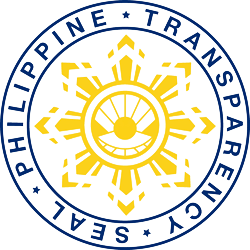Import Facilitation
Free Importation and Exportation – refers to goods that may be freely imported into and exported from the Philippines without the need for import and export permits, clearances or licenses, unless otherwise provided by law or regulation. (Chapter 3, Section 116 CMTA)
Regulated Importation and Exportation – goods which are subject to regulation shall be imported or exported only after securing the necessary goods declaration, clearances, licenses, and any other requirements, prior to importation. In case of importation, submission of requirements after arrival of the goods, but prior to release from customs custody shall be allowed, but only in cases provided for by governing laws or regulations. (Chapter 3, Section 117 CMTA). For the list of regulated goods and their administering agencies, you may visit the Philippine National Trade Repository (PNTR) at http://www.pntr.gov.ph/.
Restricted Importation and Exportation – except when authorized by law or regulation, the importation and exportation of the following restricted goods are prohibited: (Chapter 3, Section 119 CMTA)
- Dynamite, gunpowder, ammunitions and other explosives, firearms and weapons of war, or parts thereof;
- Roulette wheels, gambling outfits, loaded dice, marked cards, machines, apparatus or mechanical devices used in gambling or the distribution of money, cigars, cigarettes or other goods when such distribution is dependent on chance, including jackpot and pinball machines or similar contrivances, or parts thereof;
- Lottery and sweepstakes tickets, except advertisements thereof, and lists of drawings therein;
- Marijuana, opium, poppies, coca leaves, heroin or other narcotics or synthetic drugs which are or may hereafter be declared habit forming by the President of the Philippines, or any compound, manufactured salt, derivative, or preparation thereof, except when imported by the government of the Philippines or any person duly authorized by the Dangerous Drugs Board, for medicinal purposes;
- Opium pipes or parts thereof, of whatever material;
- Any other goods whose importation and exportation are restricted;
- Weapons of mass destruction and goods included in the national Strategic Goods list (NSGL) as provided under Republic Act No. 10697 or the Strategic Trade Management Act (STMA);
- Toxic and hazardous goods under Republic Act No. 6969 or the “Toxic Substances and hazardous and Nuclear Wastes Control Act of 1990.”
The restriction to import or export the above stated goods shall include the restriction on their transit.
Prohibited Importation and Exportation – the importation and exportation of the following goods are prohibited: (Chapter 3, Section 118 CMTA)
- Written or printed goods in any form containing any matter advocating or inciting treason, rebellion, insurrection, sedition against the government of the Philippines, or forcible resistance to any law of the Philippines, or written or printed goods containing any threat to take the life of, or inflict bodily harm upon any person in the Philippines;
- Goods, instruments, drugs and substances designed, intended or adapted for producing unlawful abortion, or any printed matter which advertises, describes or gives direct or indirect information where, how or by whom unlawful abortion is committed;
- Written or printed goods, negatives or cinematographic films, photographs, engravings, lithographs, objects, paintings, drawings or other representation of an obscene or immoral character;
- Any goods manufactured in whole or in part of gold, silver or other precious metals or alloys and the stamp, brand or mark does not indicate the actual fineness of quality of the metals or alloy;
- Any adulterated or misbranded food or goods for human consumption or any adulterated or misbranded drug in violation of relevant laws and regulations;
- Infringing goods as defined under the Intellectual Property Code and related laws; and
- All other goods or parts thereof which importation are explicitly prohibited by law or rules and regulations issued by the competent authority.



